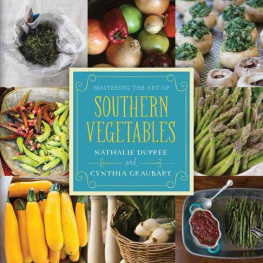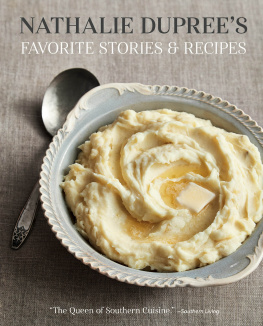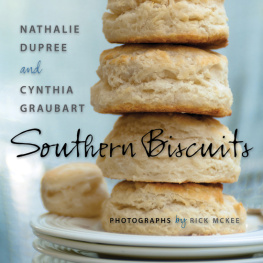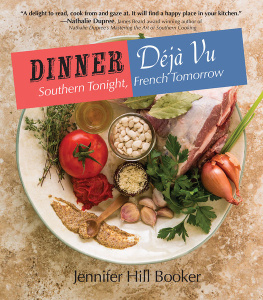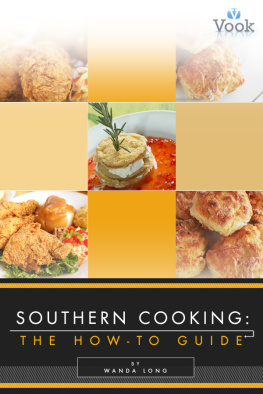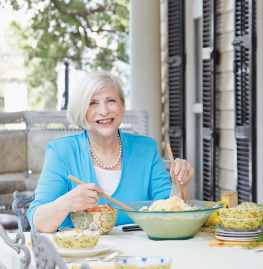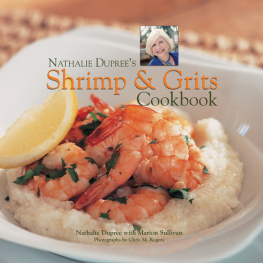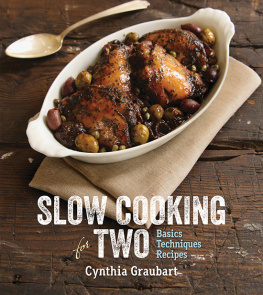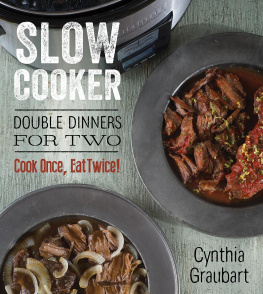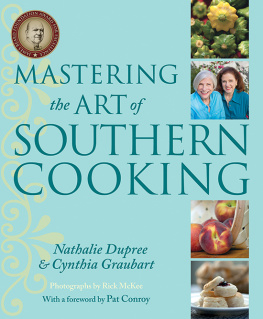Mastering the Art of Southern Vegetables
NATHALIE DUPREE and CYNTHIA GRAUBART
Photographs by Rick McKee

Mastering the Art of Southern Vegetables
Digital Edition 1.0
Text 2015 Nathalie Dupree and Cynthia Graubart
Photographs 2015 Rick McKee
All rights reserved. No part of this book may be reproduced by any means whatsoever without written permission from the publisher, except brief portions quoted for purpose of review.
Gibbs Smith
P.O. Box 667
Layton, Utah 84041
Orders: 1.800.835.4993
www.gibbs-smith.com
ISBN: 978-1-4236-3739-4
To all the wonderful women and some men who have helped me with my books and teaching. Nathalie Dupree
To Phylecia, my sister and best friend. And the only one who knows my history with peas. Cynthia Graubart
Mastering the Art of Southern Vegetables
Table of Contents
Acknowledgments
To the many that labor in the background, testing recipes, proof reading, helping to tote equipment, assisting with food photography and more, thank you again, Elizabeth (Bea) Shaffer, Lisa Moore, Nicole Marriner, Sarah Gaedes, Patty Scott, Pat Royalty, Francine Wolfe Schwartz, Alice Levkoff, and all the many others who helped with this and other facets of our culinary lives.
Our team of testers under the supreme direction of Beth Price provided valuable feedback, and we are so appreciative of their contributions: Currie Donna Currie, Tina Eib, Melody Elliott-Koontz, Mary Grande, Crystal Joyce, Karen Depp, Annmarie Kostyk, Marlene Lockett, Catherine Daum Lucas, Diane Miller, Maria Purwin, Debra Rogers, Pat Royalty, Dawn Stribling, Kim Underwood, and Francine Wolfe Schwartz.
We also thank our talented kitchen director/food stylist, Mallory DeGolian.
Foreword
Once upon a time, not so long ago, there were three little words guaranteed to strike fear and loathing into the hearts of our children:
Eat your vegetables.
Perhaps with good reason. Those were the days when string beans were often stewed with fatback until they were wrinkled and shriveled, cooked carrots could be smeared on the plate like orange paste, and green peas often resembled furry green BBs.
But that time is no more. Now vegetables star in the toniest restaurants, adorn chic dinner plates from Malibu to East Hampton, and have tastes to make the angels sing.
In this book, my friends Cynthia Graubart and Nathalie Dupree have gathered 120 vegetable recipes that will make you a star and your guests happier than pigs inwell, you know.
As for those long-ago children, happily, they grew up.
So did vegetables.
Anne Rivers Siddons
Introduction
While filming more than 100 television episodes, we traveled all over the South and enjoyed seeing how and where its vegetables are grown. We ate tomatoes from the hills of western North Carolina and ripe melons from the sandy fields of southern Georgia. The Georgia Commissioner of Agriculture loaned us his plane, and we loaded its storage area with zucchini, squash and Vidalia onions to take home. We watched as onions were pulled from the ground, laid out to dry, stored and shipped. We visited fields with sivvy beans as far as the eye could see, and we pulled up Jerusalem artichokes, their sunflower seeds scattering to the winds. We dug sweet potatoes and tiny white potatoes, pulled up peanuts, and watched as cucumbers were pickled. We realized then, as we do now, what a boon it was to be in a region with two to three growing seasons and a cuisine as wide and deep as the region itself.
Our region spans the East Coast from Maryland to Florida and westward across to Texas, encompassing a range of ethnicities as well as a variety of climates and soils, all of which create a diverse and rich selection of vegetables to choose from. Many cultures and many peoples have contributed to the lexicon of Southern cooking, primarily those from Africa, England, Spain, and France.
The Souths economy has had many ups and downs that impacted the food. Regardless, fresh vegetables have long been the stars of the Southern plate. For the average agrarian family, home gardens, little plots that fed a family almost all year long, enabled them to avoid spending cash money for food and save it for other necessities. Meatprimarily porkwhich was particularly important as a source of energy for those who worked in the fields all day, was relegated to important meals, such as Sunday dinner or a holiday, or added as an important protein and flavor enhancer to vegetables.
Although the South has a long agricultural history, the expanding farm-to-table movement has again increased knowledge of the growing number of vegetables available to the home cook. More of us are growing our own vegetables or seeking out those grown locally or regionally, with less travel and storage time en route. Farmers are indulging their creative streaks and developing multicolored beets, bell peppers, tomatoes, and other vegetables. There are more vegetable options than ever before, and these are exciting as well as tasty, filling, and nutritious, bringing dashes of color, enticing aromas, and variety to our tables.
In addition to the impressive new varieties of vegetables being grown, seed banks and agricultural historians are reviving heirloom varieties of vegetables that languished in years past in favor of vegetables that shipped better, were uniform in size, and were, quite frankly, tasteless. The packs that contained three pale tomatoes are nearly banished, with tomatoes of deep color and rich, earthy taste winning out, enticing us all to eat more and better.
Chefs make a vital contribution to Southern vegetables, shaving and ribboning them, roasting, grilling, broiling, boiling, and braising them in new ways with new varieties and new sauces. They have shown us it possible to use just a small amount of one ingredient mixed with small amounts of others to make a whole dish, in a way that accommodates a gardens irregular production. Continual improvement in freezing and preserving methods maximize both freshness and the number of months during a year that vegetables grace our Southern tables.
With the ever-growing variety of vegetables and ways to cook them, it is no wonder that the largest, and coincidentally our favorite, chapter in our book Mastering the Art of Southern Cooking is Vegetables and Sides. Here we present our favorite vegetable recipes from that book alongside many new ones. We have tried to enhance the flavors for which Southern cooking is known with the new techniques and ingredients while also retaining the traditional. We have honored as well as varied old favorites such as creamed corn. For instance, corn itself has experienced a change-up, with even the corncob now being used as a stock to increase tastiness and nutritionsomething unheard of in even the thriftiest of household in my youth.
These recipes use ingredients readily available and often grown in the South, with a few upscale ingredients from away (like Parmigiano-Reggiano cheese) that enhance just about any vegetable and have been imported to the this region since the days of Thomas Jefferson. Spices have long been available in the South, arriving in our ports in Galveston, New Orleans, Savannah, and Charleston, among others. Some of the imports, most famously coconut, are used in dishes that are typically considered Southern even though they are not grown here. We have added the meat flavoringsfat back, bacon, ham, etc.that are part of traditional Southern cooking, but certainly they, too, can be omitted and other flavorings added.

